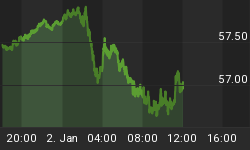The "dumb money" indicator is now showing that investors are extremely bearish, and this is a bull signal. On average, the best time to buy is 1 week after the signal. Several caveats are worth noting.
First, about 80% of the signals will produce positive results within a reasonable draw down. What is meant by "reasonable"? The SP500 should bottom within 6% of next week's buy point. If the SP500 drops below next week's buy signal by more than 6%, then this is a failed signal. A failed signal is the market's way of saying that what we expect to happen has not happened, and failed signals can lead to very strong moves opposite to those expectations.
Second, the current extreme reading in the "dumb money" indicator is not supported by other measures of investor sentiment. For example, the Rydex market timers are still showing extremes in bullishness and in some sense, they have been unwinding their bullish positions over the past several months. By no means are they bearish, and this series is looking more like a market top than a market bottom. Corporate insiders did hit extremes in buying 2 weeks ago, but like the current "dumb money" indicator reading, these were only "mild" extremes. So what does it mean? The resulting snap back rally is likely to be weak and unlikely to carry as far as a rally that begins when all of our measures of investor sentiment are showing much greater extremes of bearishness.
The market has bottomed where one would expect it to have bottomed -- near its 200 day moving average. I am sure this has brought a sense of order and relief to the bulls and to those investors who were buying the kool-aid only 2 short months ago. Ahh, this is how bull markets function. Now that this temporary blip (mis-pricing) is over, we can get back to the business of being bullish. I am not trying to discount the current bull signal. A bottom is being forged. It would be nicer to have seen greater extremes in bearish sentiment at the bottom as this leads to stronger future returns. I could just as easily make the case that this is the last gasp of an aging bull market.
The "Dumb Money" indicator (see figure 1) looks for extremes in the data from 4 different groups of investors who historically have been wrong on the market: 1) Investors Intelligence; 2) MarketVane; 3) American Association of Individual Investors; and 4) the put call ratio. This indicator is showing extreme bearishness.
Figure 1. "Dumb Money"/ weekly
Figure 2 is a weekly chart of the SP500 with the InsiderScore "entire market" value in the lower panel. From the InsiderScore weekly report: "S&P 500: Sentiment Remains Positive But Volume Declines.... Russell 2000: Number of Buyers Drops But Sentiment Remains Positive."
Figure 2. InsiderScore "Entire Market" value/ weekly
Figure 3 is a weekly chart of the SP500. The indicator in the lower panel measures all the assets in the Rydex bullish oriented equity funds divided by the sum of assets in the bullish oriented equity funds plus the assets in the bearish oriented equity funds. When the indicator is green, the value is low and there is fear in the market; this is where market bottoms are forged. When the indicator is red, there is complacency in the market. There are too many bulls and this is when market advances stall. Currently, the value of the indicator is 62.78%. Values less than 50% are associated with market bottoms. Values greater than 58% are associated with market tops. It should be noted that the market topped out in 2011 with this indicator between 70% and 71%.
Figure 3. Rydex Total Bull v. Total Bear/ weekly
TheTechnicalTake offers a FREE e-newsletter: HERE
















